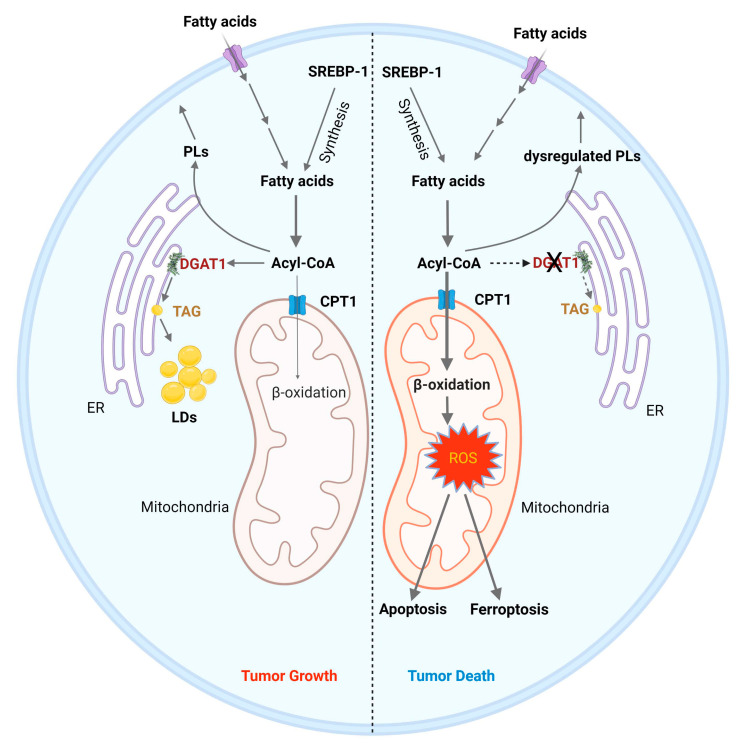Figure 3.
Inhibition of DGAT1 as a therapy strategy to induce cancer cell death. (1) Left: Tumor cells acquire fatty acids through uptake or de novo synthesis via the activation of SREBP-1. Fatty acids are converted to acyl-CoAs, which are the substrates for phospholipid (PL) synthesis and produce energy via entering into mitochondria to undergo β-oxidation and oxidative phosphorylation. Excessive acyl-CoA is stored in LDs as catalyzed by DGAT1 in tumor cells. (2) Right: Inhibiting DGAT1 causes an imbalance of fatty acid catabolism, leading to cell death. Inhibiting DGAT1 forces more acyl-CoAs to enter the mitochondria through carnitine palmitate transferase 1 (CPT1) for β-oxidation, leading to high levels of reactive oxygen species (ROS), which trigger apoptosis and ferroptosis to kill tumor cells. Moreover, the profile of PLs is altered upon DGAT1 inhibition, contributing to further cellular stress.

